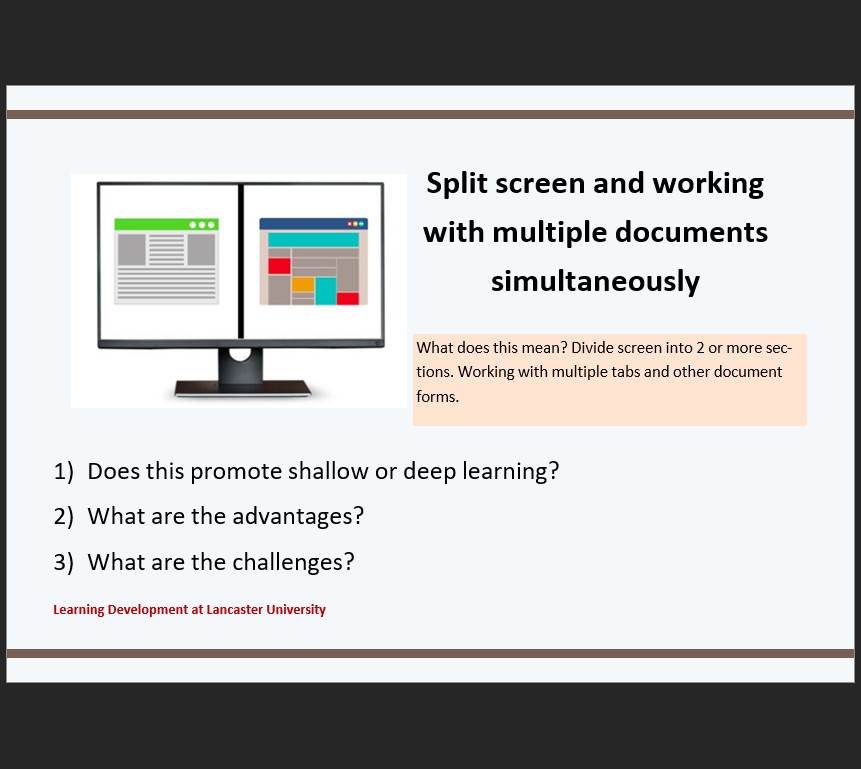This material introduces students to basic strategies for reading in digital and print formats. It encourages them to consider the advantages and challenges of each one, and the different learning contexts for which they may be most appropriate.
There are 6 strategies:
• Copy and paste function
• Digital annotation tools
• Split screen and working with multiple documents
• Support reading with online tools
• Using a mixture of mediums
• Word search function
Each document is designed as a flip-card of a strategy. One side outlines what the strategy is, and then poses questions for the student/s to think about. The second side outlines the advantages and challenges in relation to shallow and deep learning. We hope this will encourage students to reflect upon the choices they make when reading, and make purposeful and informed choices.
Following this, there are 2 scenarios provided as a separate document. Students are asked to select from 3 given responses to the scenario and then reflect upon the advantages and limitations of the response/s. This should allow students to situate the strategies within a real-world scenario.
These materials could be used within a number of learning settings, including a workshop or a one-to-one appointment.
These resources were developed from an ALDinHE funded research project into how students read for their studies, focusing on digital and print mediums. The selection of strategies and guidance given is based upon focus groups conducted with students at Lancaster University.



Reviews
There are no reviews yet.